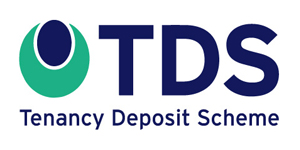Legal obligations
There are certain standards that every landlord must comply with. Even if you plan to use an agency, it’s best to keep track of everything yourself: at the end of the day, if things go wrong, the buck will make its way to you in the end. Here’s a handy checklist.
Safety standards

- The Smoke and Carbon Monoxide Alarm (England) Regulations (2015) state that you must have a smoke alarm on each floor of the property. Carbon monoxide alarms should be installed in rooms with a solid fuel burner, such as a coal fire, wood burning stove or biomass stove. Good practice means demonstrating the alarm to the tenants when they move in and asking them to test the alarm monthly. It’s recommended that domestic smoke alarms be replaced every ten years.
- The Gas Safety (Installation and Use) Regulations 1998 require every gas appliance to be checked, tested and certified to be in working order on an annual basis. You must use a registered gas engineer to carry out the checks. The gas safety certificate should be given to the tenant and to your letting agency, if you use one.
- Electrical Safety Standards in the Private Rented Sector (England) Regulations 2020 makes it a requirement that electrical installations are inspected and tested at least every five years by a qualified electrician. Whilst small electrical devices (for example, a toaster) don’t legally need to be tested, they must be safe for use. A Portable Appliance Test will provide evidence that you have checked for this.
- The Furniture and Furnishings (Fire) (Safety) Regulations 1988 stipulates that furniture in your property must meet safety standards and display the appropriate labels.
- As a landlord, you have the duty of care to ensure the water supply is safe, and free from Legionella (Legionnaire’s disease). The Health and Safety Executive has more details of actions to be followed.
Other essential paperwork
- Right to rent means checking that your prospective tenant/s can legally rent a property in England. This needs to be done with all tenants, not just those from overseas. The tenant will need to provide documentation. This can be a single document such as a valid passport, or a combination of, for example, a birth certificate and driver’s licence. You must record and retain evidence of the documentation throughout the tenancy.
- With assured shorthold tenancies, deposits must be retained in a UK government-approved deposit protection scheme. This will be returned to the tenant at the end of the tenancy, unless damage has been caused to the property, or rent has not been paid.
- The Domestic Minimum Energy Efficiency Standard (MEES) Regulations require you to have an Energy Performance Certificate, or EPC. You need an accredited assessor to rate your property for energy efficiency on a scale of A-G, with A being the most efficient. Legally, your property must rate at a minimum of E, and there are penalties of up to £4,000 for non-compliance.
- Tenants must be given either the landlord’s full name and address, or that of the letting agent. They should also be provided with the Government’s How to Rent guide.
- Specialist landlord insurance isn’t a legal requirement but you need to be aware that standard household insurance is unlikely to cover rental agreements. If the worst happens and you need to make a claim, the last thing you’ll want to hear is that your buildings or contents insurance is invalid. Even if you’re renting to family, if they pay rent, they count as tenants.








